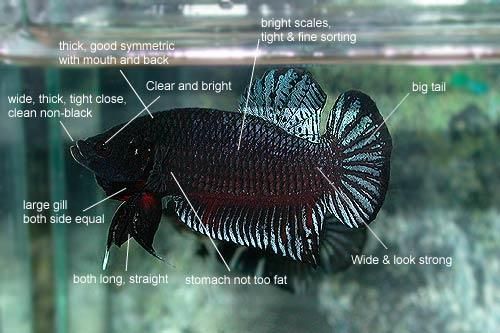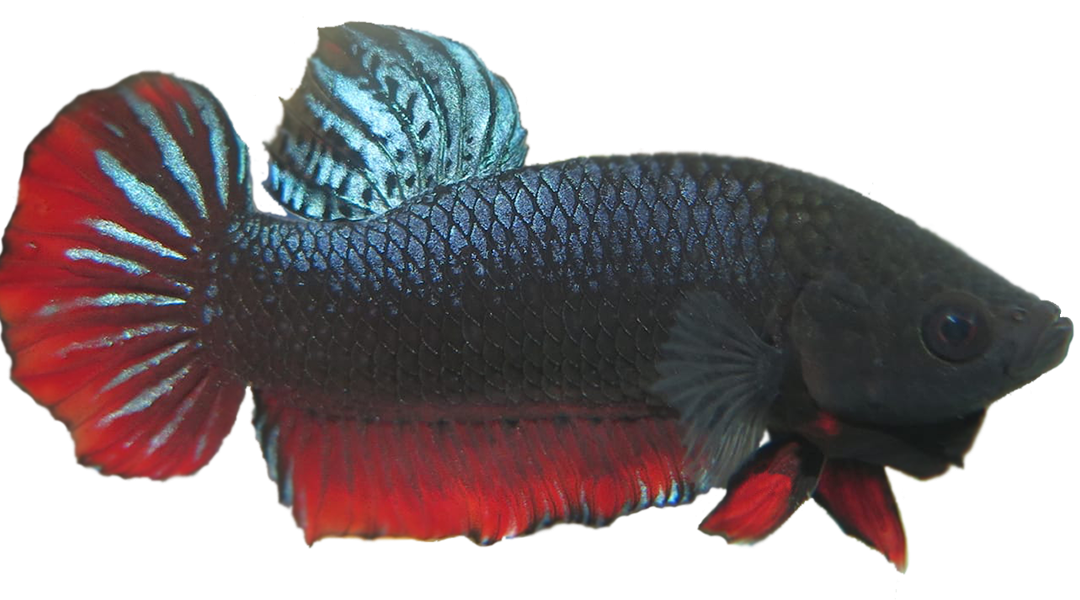To begin training your plakats for combat, start by conditioning their scales with Indian Almond Leaf and a small amount of sea salt in their individual containers for one week. The water should look like tea. Feed them once a day with wholesome food such as blood worms or mosquito larvae. This will help them reduce fat. Your goal is to build muscle not fat, just like human athletes. With this conditioning, their scales will become harder and shinier. The fish can stay at this level of conditioning for weeks with no problems if you are unable to proceed with the training regime for any reason. Just change the water once a week. Do not allow the males to see each other at this time.
Once the fish are conditioned, you can begin training more intensely. At this stage, start feeding them richer, high energy foods for stamina and endurance and follow the procedure below. In Thai, it is called Parn Pla.

Traditionally a large, round, earthenware container would be used. Place clean water with Almond Leaf into the container and add four to five healthy females that are smaller than the male being trained. Then place the male into the container. Leave him in the container for about five minutes to chase the females. Once he starts biting the females, he is to be removed. Do this for six to seven days and not exceeding ten days. It will make the male very aggressive and strong and he should show his colors very intensely. After this, allow the male to rest for one to two days before combat.
Some trainers include practices of water swirling to strengthen the fighter and also “banting” where two males are placed in very shallow water so that they can’t swim very well. When they see each other, they will still try to fight, but will be unable to because of the shallow water. Swirling is equivalent to aerobic cardio training and banting is equivalent to resistance weight training in human athletes. If you include these training methods, do not do them for longer than five minutes at a time and only once a day. You do not want to over train your fighter and weaken him as a result.
Due to some confusion on how to produce winning fighters consistently, we are offering this tutorial to help insure that all (or at least most) of your sparing matches are successful. This will require lots of dedication on the part of the trainer to produce winners consistantly. Just because you have a fighter from a winning line does not guarantee victory. Victory depends also on committed training. Just like Olympic athletes.
First, fighters are at their prime when they are around 8 and 9 months of age or slightly older. It is at this time that their teeth are sharpest, their scales are hardest and their bones and muscles are strongest. You will generally have 1 month of consistant victory from siblings of this line if trained well.
Most people already know that siblings from one spawn may be of different colors and that each color type has it’s own fighting style generally. It may be tail biting, side attack or some other method, but still will be the same. Most people think that if one color type defeats another spawn, then all of the winner’s siblings will defeat the other. That is only true if they are trained well. The best way to know the age and fighting style of each fish is to ask the breeder or seller. This is important because a fighter’s prime fighting time is about 1 month only. After that, even the best fighter has dull teeth from all the fighting. Usually it is best to retire the fighter at this point for breeding or as a pet. But if you let him rest in water with almond leaf (dried banana leaf is traditional, but now out of favor for almond leaf) without seeing other males for 2 weeks and then train again for 2 weeks, his teeth will be sharp again and you can fight him for one more month or so.
The key here is to always have a fighter in it’s prime and ready to fight. So when one champion starts to tire and needs rest, you will have another one ready to fight and when that fish tires, you should have another fish conditioned and ready along with the first champion. You need to schedule your training so that you are always training a new fish every two weeks. Some fish will be fighting, some resting and others training. But you as the trainer must train your fighters along this schedule to keep winners ready at all times. This means that you will be training 1/3 of your fighters at any given time. It is good to have close relationship with a reputable breeder who is always producing more lines. That way you will have a steady supply of fresh fighters in their prime to always ensure victory in the arena.
